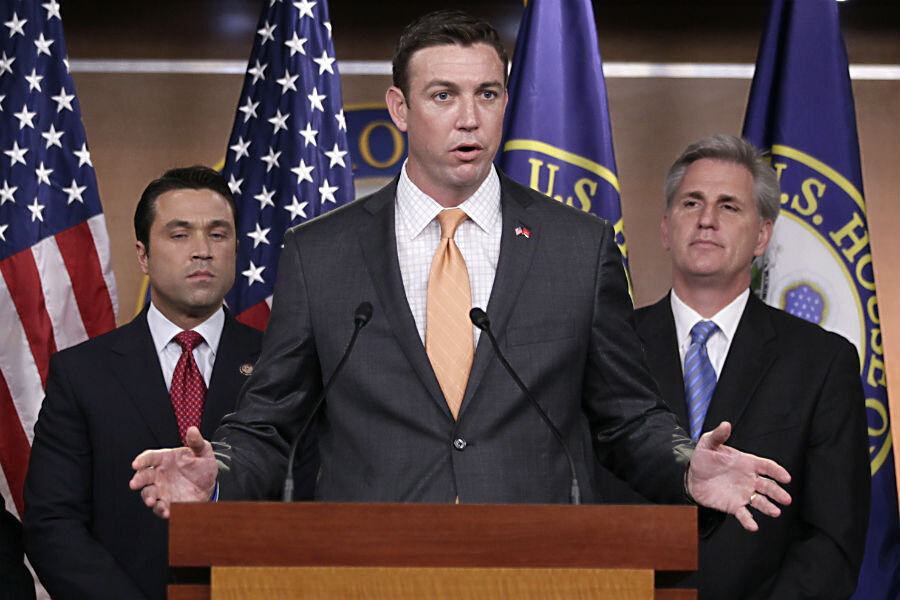Why don't US Navy SEALs have enough rifles?
Loading...
United States Navy Sea, Air and Land Teams (SEALs) may not have enough rifles to go around, according to a California congressman who says several of the elite servicemen have contacted him about the issue.
Rep. Duncan Hunter, a Republican from San Diego County in California and a former Marine, says that SEALs who have discussed the issue with him say their personalized weapons are reissued to other soldiers after they return from deployment, creating a “weapons carousel,” according to the Associated Press.
“They want their rifles,” Representative Hunter told the Associated Press. “It's their lifeline. So let them keep their guns until they're assigned desk jobs at the Pentagon.”
As each SEAL operative’s rifle usually ends up heavily customized by its user, reclaiming them before a soldier’s service ends goes against the “train like you fight” mentality followed by the Navy commandos. Hunter declined to give further information on the specifics of the guns to protect SEALs’ identities.
While the SEALs are hoping more can be spent to assure them access to the rifles they say they need, Hunter says funding is not the problem. Combat rifles are among the least costly items on the Navy’s budget, costing as little as $1,000 each if bought in bulk in the case of the commonly used M4 carbine, but can run up to several thousands of dollars depending on the model and modifications. Even so, special forces spending has generally increased following raises from Congress in the wake of the Sept. 11, 2001 terrorist attacks, and providing individual weapons for SEALs should be possible without much oversight.
“There is so much wasteful spending,” Hunter said of the US Naval Special Warfare (NSW) Command, the oversight unit whose mission is “To man, train, equip, deploy and sustain NSW forces,” including the SEALs.
“Money is not reaching the people it needs to reach,” Hunter added.
“We're certainly running that down,” Army Gen. Joseph Votel said of the reported rifle shortage in testimony before the House Armed Services Committee, adding that “we'll certainly take immediate action,” if a shortage is officially discovered to be affecting SEAL combat readiness.
Hunter also expressed concerns over the amount of ammunition provided to SEALs for training and with the settlement of servicemen's travel claims in a letter to NSW chief Rear Adm. Brian Losey.
“There are obviously some trade-offs being made, but they’re occurring at the expense of operators and their firepower,” Hunter’s chief of staff Joe Kasper told Navy Times regarding the Navy budgeting system. “[T]hose are the absolute worst trade-offs to make.”
The lack of rifles reported by the operatives could be due to the dramatic rise in Special Operations Command (SOCOM) troop levels in the past years; there were 33,600 about a decade ago and 56,000 today including 2,450 SEALs in active duty, according to the force’s website.
The SOCOM budget for the 2016 fiscal year is $10.4 billion, and President Obama suggested a $400 million increase for the coming fiscal year in his latest budget proposal. The Navy also recently asked for more than $2 billion this year for “unfunded priorities” including jets and a destroyer, according to Reuters.








